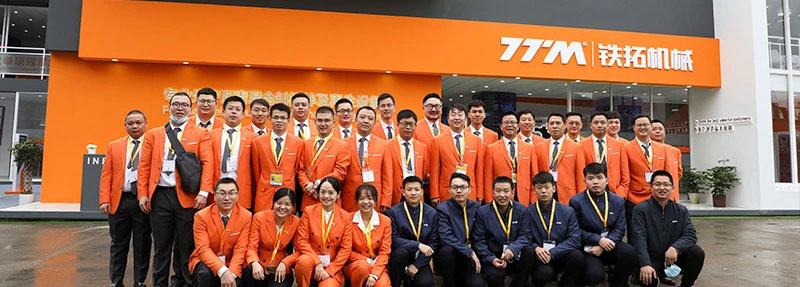Every paving contractor, quarry operator, and road-building agency eventually hits the same wall: production bottlenecks, sky-high fuel bills, and surprise shutdowns that eat profit faster than a cold mill scarifies asphalt. If you have been frantically googling asphalt plant equipment solutions at 2 am, only to drown in ads for random spare parts, this article is your lifeline. Below, we zero-in on the hardware, software, and workflow tweaks that actually move the needle on uptime and profitability.
Why “One-Size-Fits-All” Plants Rarely Fit Anything
Let’s be brutally honest—buying an off-the-shelf 160 tph drum mix plant without analysing your aggregate moisture curve is like ordering a XXL jacket for a poodle. Retrofitting generic equipment with site-specific asphalt plant equipment solutions (think variable-frequency feeders, dual-damper exhaust, and self-cleaning baghouses) can raise production by 12–18 % without adding a second shift. The trick is matching component upgrades to your mix design book, not the sales rep’s quota.
Heat Management: The Low-Hanging Fruit No One Talks About
Did you know that every 5 °C drop in stack temperature equals roughly 0.4 % fuel savings? Modern counter-flow drum dryers with built-in heat-exchanger rings recycle exhaust air and cut gas bills by up to 10 %. Pair that with an AI-enabled burner modulation system and you’ll hit target temperatures ±3 °C; your QC manager will finally stop sweating bullets on DOT audits. Oh, and if you still running a 1960’s burner, it’s time to let go—nostalgia isn’t a business model.
Silos, Drag Slats, and the Hidden Cost of “Cheap” Conveyors
It’s tempting to save $30 k on a bargain-bin drag slat conveyor. Until the forged chain snaps at 11:30 pm and you’re paying $8 k per shift in crew standby while hunting for metric rollers in a cornfield. Upgraded conveyors with case-hardened floor plates and dual-seal bearings last 3× longer and often pay for themselves in the first two seasons. Add a variable-pitch silo discharge gate, and you’ll eliminate the dreaded “hot mix hang-up” that forces operators to climb inside with a shovel—nobody wants that OSHA headline.
Retrofit vs. New: Where Should Your CapEx Go in 2024?
Before signing a PO, run a 10-year NPV model that factors in carbon tax credits, electricity inflation, and upcoming silica-dust regulations. In most North American markets, a targeted retrofit—baghouse, drum, burner, and load-out automation—delivers an IRR above 22 %. A greenfield plant only beats that number if you consistently exceed 250 ktpa. In short, smart asphalt plant equipment solutions usually start with retrofit, then scale to new lines once land and zoning line up.
Software Is the New Steel
Hardware alone won’t save you. Plants using cloud-based SCADA with predictive analytics report 17 % less unplanned downtime. Imagine your screen flashing “vibration trend on feeder #2 indicates bearing failure in 4–6 operating hours” instead of discovering the issue after the sheared coupling shuts you down on a Monday morning. Integrate that with RFID truck tracking and you’ll cut load-out errors by 30 %, keeping those picky state DOT auditors happy.
Environmental Compliance: From Hassle to Profit
With the EPA’s new PM-2.5 rules looming, RAP (reclaimed asphalt pavement) systems are no longer optional. Modern asphalt plant equipment solutions include low-temperature parallel flow dryers that allow up to 50 % RAP without blue-smoke haze. Bonus: every 10 % RAP typically shaves $0.45 off per ton material cost. Do that on 200 ktpa and you’re saving $90 k annually—enough to justify the $350 k upgrade in year one.
Spare-Parts Strategy: Build a “War Room,” Not a Warehouse
Some managers hoard spares like doomsday preppers. A smarter approach is a dynamic QR-coded inventory tied to OEM lead-times. Stock only the A-class parts (burner blower, trunnion bearings, PLC module) that cause >24 h shutdowns. For B- and C-class items, negotiate 72-hour drop shipping with your supplier. The carrying-cost savings buy you a new lab testing suite, which, by the way, is an indirect but powerful asphalt plant equipment solution—better mix design equals fewer customer complaints and callbacks.
Training: The Most Overlooked ROI Lever
You can install a state-of-the-art drum, but if the night-shift burner tech still thinks “excess air” is a reality-TV show, your fuel curve will look like a hockey stick. A two-day on-site certification covering combustion tuning, baghouse pulsing logic, and moisture calibration typically costs $4 k yet yields 3–5 % fuel reduction for the entire season. Do the math: 200 ktpa × 3 % × 5 L/ton × $1.20 /L = $36 k saved. That’s a 9× ROI, people.
Key Takeaway: Think System, Not Widget
Whether you’re running a 1960s batch plant or a 2022 warm-mix monster, the best asphalt plant equipment solutions treat the operation as an ecosystem—dryer, silo, automation, and human know-how must sing in tune. Tackle the bottleneck, measure everything, then scale. Do that, and the next time a competitor brags about their shiny new silo, you’ll smile knowing your retrofitted system is already paid off and printing margin.

